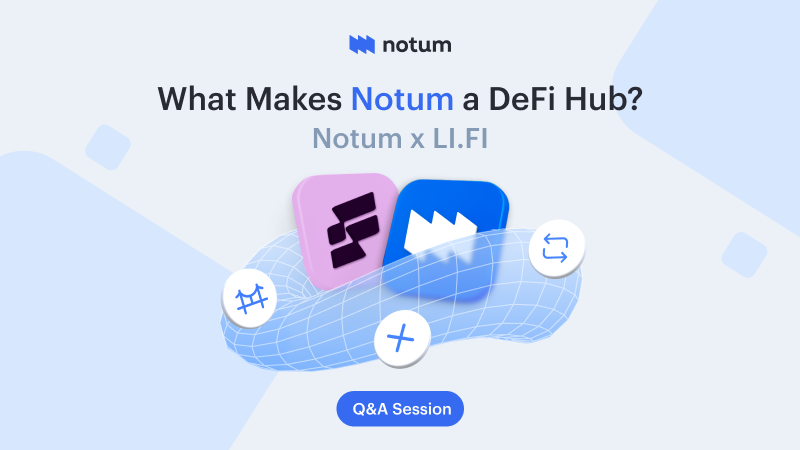About Li.Fi
LI.FI is a multi-chain liquidity aggregation protocol that allows users to make all sorts of swaps. LI.Due to aggregating bridges and DEX aggregators in more than 20 networks, FI makes it possible. The protocol supports popular blockchains such as Ethereum, Solana, Arbitrum, Bnb, Polygon, Optimism, Base, etc. Thus, LI.FI is a single API allowing users to swap, bridge, and zap between multiple protocols and networks.
Source: Li.Fi’s Website
A unique feature of LI.FI is that its JS/TS SDK can be implemented in any front- or backend, which means developers can build UX/UI around the bridge and swap functions of the platform. LI.FI also provides fairly decent error handling due to processing the communication between smart contracts and smart routing API.
LI.FI is a unique protocol that offers users enormous functionality and extensive use cases. These include the ability to drive cross-chain strategies in DeFi protocols, interaction with NFT marketplaces, allowing users to buy NFTs with money from any network, as well as interaction with decentralized exchanges and DEX aggregators. With LI.FI, users can bridge and swap their assets, as well as connect their deployment.
Since LI.FI connects DeFi to the world of traditional finance with one API, it has some significant advantages:
- Security. LI.FI considers security its typical priority, therefore it regularly undergoes various enterprise-grade security controls and audits to minimize risks.
- Monetization Features. LI.FI offers simple and convenient fee structures, which allow users to collect and distribute commissions between partners. Moreover, the platform also offers automatic fee conversions.
- Cross-chain liquidity sources. LI.FI interacts with a huge number of platforms and projects, such as DEXs, bridges, lending protocols, etc.
- Any to any swaps. Since LI.FI functions as a bridge and DEX aggregator, it can send any asset to any asset on over 20 chains.
How Does It Work?
Source: Li.Fi Website
- LI.FI's DeFi Abstraction Contract aggregates cross-chain bridges and connects them with all DEXs and DEX aggregators on all chains;
- LI.FI's Smart Routing API aggregates data across all liquidity pools on DEXs and Bridges. Plus, it measures, compares, and calculates all the most important data connected to liquidity, fees, speed, and the gas fees of the chosen protocols to provide the best possible swap;
- LI.FI's SDK and Widget manage the communication between Li. Fi’s API and Smart Contract. The Widget provides a smooth user experience with the flexibility to swap from anywhere directly into a dApp, contract, or asset.
Q & A Session
What makes Li.Fi the coolest provider for swapping and bridging? What sets Li.Fi apart?
LI.FI connects with over 20 bridges, 40 DEXs, and 3 solvers providing extensive access to liquidity and routes for both same-chain and cross-chain swaps. This ensures users can find the best rates and most efficient paths for their transactions.
LI.FI's Smart Routing algorithm aggregates data from all liquidity pools across DEXs and bridges. It measures, compares, and calculates key data points related to liquidity, fees, transaction speed, and gas costs to offer the best possible swap.
What sets LI.FI apart is its proprietary routing algorithm and the trust it has earned from major wallets like Robinhood, MetaMask, Phantom, Binance, and over 250 other companies.- How many and what types of swap options do you offer? Are there any expansion plans?
LI.FI provides access to over 15 bridges, 33 decentralized exchanges (DEXs), and 3 solvers, ensuring users get the best possible swap options. We are continually expanding, integrating a new blockchain every week, and regularly adding new bridges, DEXs, and solvers to our platform.
- Can you detail the most advanced technical features of Li.Fi and explain how they enhance user experience?
LI.FI’s proprietary algorithm finds users the best prices by analyzing multiple bridges, DEXs, and solvers. This saves users from having to visit over 10 websites, spend hours on due diligence, and build trust with various liquidity sources. All of this is done seamlessly by us within a single interface
- What major trends do you see in the DeFi space, and how are you adapting to them?
As this industry moves at such a fast pace with new terms emerging every day, we ensure we make the best decisions for our business without just joining the hype train.
Concepts like intent systems and gas abstraction are among the many innovations LI.FI is adapting and building.
- What security measures do you have in place? What steps are you taking to continuously improve the security?
LI.FI is striving to be the most secure enterprise-grade solution on the market. In addition to optimizing routing for speed and cost, our proprietary routing algorithm analyzes real-time conditions to determine reliability and potential security concerns.
LI.FI enables integrators to customize which bridges, DEXes, and DEX aggregators you would like whitelisted or blacklisted, allowing you greater compliance controls.
We are frequently (quarterly) audited by tier 1 firms. In regards to security, our routing algorithm also includes:
- Monitoring the execution time of transfers for every bridge to be able to show live data how long transfers take to warn the user if a bridge is stuck and transfers take longer than usual;
- We (use tools like https://www.guardrail.ai/ to) monitor bridges using AI, to detect unusual activity (we do this for our contracts already);
- Monitoring the liquidity of bridges across chains, including the pending transfers to forecast liquidity;
- Detect mismatches if more funds are paid out by a bridge than deposited somewhere else before.
Disclaimer: Notum does not provide any investment, tax, legal, or accounting advice. This article is written for informational purposes only. Cryptocurrency is subject to market risk. Please do your own research and trade with caution.
